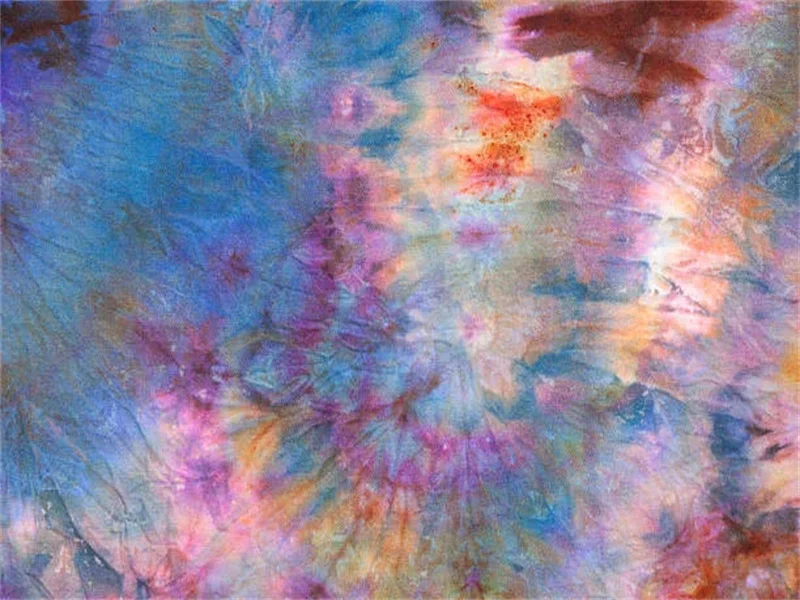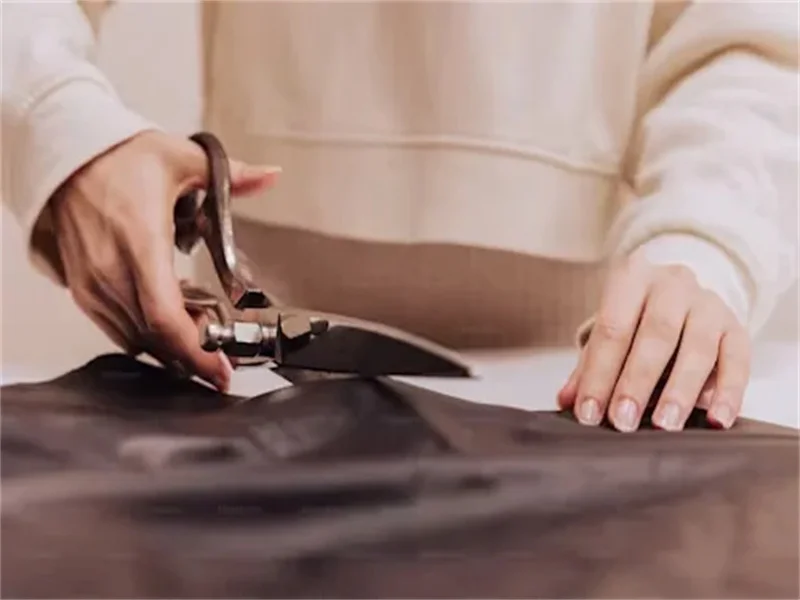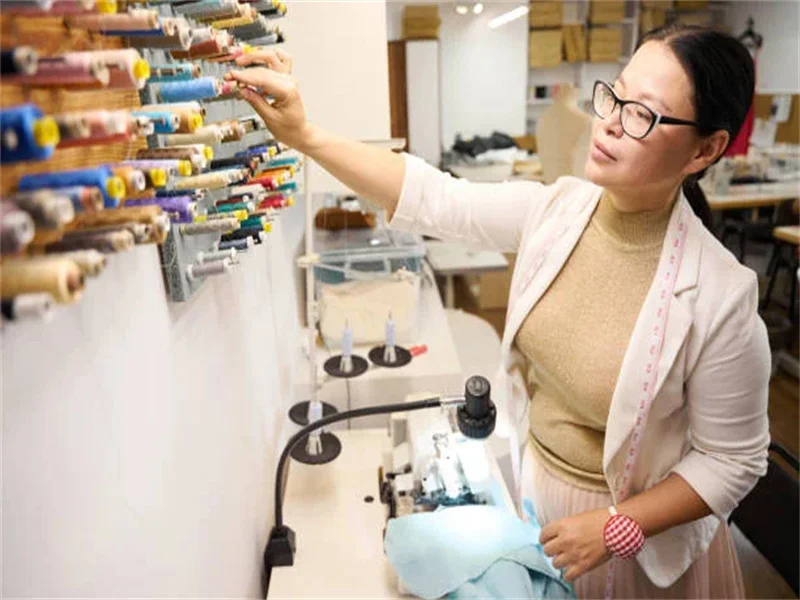Jersey fabric is a popular choice for many sewing projects due to its stretch and comfort. Whether you’re making a T-shirt, dress, or leggings, sewing with a jersey can be a bit challenging if you’re not familiar with the fabric.
In this blog post, we’ll go over some tips and tricks for sewing jersey fabric, including how to sew Jersey Fabric, and dealing with stretch.
What is Jersey Fabric?

Jersey fabric is a type of knit fabric that is known for its softness, stretchiness, and comfort. It is made from a combination of cotton, wool, or synthetic fibers, and is often used in the production of T-shirts, sweaters, and other casual clothing items. Jersey fabric is also popular in the sports and activewear industries, as it is able to wick away moisture and keep the wearer cool and dry.
How to Sew Jersey Fabric?

When working with stretch jersey fabric, having the right tools and equipment can make all the difference in the quality of your finished project. Here are some of the best tools and equipment for sewing with stretch jersey fabric:
Choosing the Right Needle and Thread
When sewing jersey fabric, it’s important to use the right needle and thread. A ballpoint needle is recommended as it has a rounded tip that glides through the fabric without snagging. For thread, polyester or nylon thread is a good choice as it has some stretch and will match the stretch of the jersey fabric. Avoid using a cotton thread as it doesn’t have much stretch and may break when sewing with a jersey.
Preparing the Fabric
Before you start sewing, it’s a good idea to prewash the jersey fabric to remove any sizing or chemicals that may be on the fabric. This will also help to preserve the fabric and prevent it from shrinking after you’ve sewn your project. After washing, iron the fabric in a low heat setting to smooth out any wrinkles.
Dealing with Stretch
One of the challenges of sewing with jersey fabric is dealing with the stretch. To prevent the fabric from stretching out of shape while sewing, use a walking foot or a stretch stitch on your sewing machine. A walking foot will help to evenly feed the fabric through the machine and prevent it from bunching up. A stretch stitch, such as a zigzag stitch or a triple stitch, will allow the fabric to stretch without breaking the thread.
Sewing Techniques for Jersey Fabric

Technique 1: Using a Sewing Machine

1. Setting Up the Sewing Machine:
Use a ballpoint needle to prevent snagging.
Choose a stretch or zigzag stitch setting on your machine.
Adjust your stitch length to 2.5 to 3.5 mm.
2. Choosing the Right Stitch Type:
Zigzag Stitch: Provides flexibility and prevents seams from breaking.
Stretch Stitch: Often has a unique pattern that allows for stretch without puckering.
3. Sewing Process:
Place your fabric pieces right sides together.
Pin or clip the edges to secure them.
Start sewing at a slow speed to maintain control.
Keep the fabric taut but not stretched as you sew.
Backstitch at the beginning and end for secure seams.
4. Handling Curves and Hems:
For curves, sew slowly and adjust your fabric as needed.
Use a twin needle for hems to give a professional finish, creating two parallel lines of stitching.
Technique 2: Using a Serger
Setting Up the Serger:
- Thread your serger with appropriate stretch thread.
- Set the stitch type to a 4-thread overlock, which provides stability and stretch.
Selecting the Appropriate Settings:
- Adjust the differential feed to prevent stretching. A setting slightly below the middle is often effective.
Sewing Instructions:
- Align the fabric edges as you would with a sewing machine.
- Feed the fabric through the serger, allowing the machine to guide it.
- This technique will create a clean edge while simultaneously finishing seams.
Technique 3: Hand Sewing (for Small Repairs or Projects)
Choosing the Right Needle and Thread:
- Opt for a hand-sewing needle suitable for stretch fabrics and polyester thread for durability.
Basic Stitches to Use:
- Backstitch: Provides a strong seam, ideal for seams under tension.
- Slip Stitch: Useful for hemming without visible stitches.
Hand Sewing Process:
- Start by securing your fabric edges.
- Use small, even stitches to maintain fabric stretch.
- Ensure your thread tension is consistent to avoid puckering.
Finishing Touches
- Hemming: Use a zigzag stitch or twin needle for hems, as these allow for stretch.
- Adding Embellishments: If desired, use fabric glue or stitching to attach embellishments without distorting the fabric.

Jersey Fabric Common Problems and Solutions

Wrinkle Problem
- Possible causes: improper sewing machine pressure, uneven feed speed, excessive fabric stretching.
- Solution: adjust the sewing machine pressure to adapt it to the characteristics of knitted fabrics; ensure that the feed teeth work properly and feed the fabric evenly; pay attention to controlling the stretching degree of the fabric when sewing, and use auxiliary tools to fix the fabric when necessary.
Jumping Problem
- Possible causes: bent or blunt needle, inappropriate thread tension, and clogged needle eye.
- Solution: replace a new, suitable needle; readjust the thread tension so that it is not too tight or too loose; clean the needle eye and remove the blockage.
Uneven Stitching Problem
- Possible causes: unstable operating speed, too fast sewing machine speed, and uneven fabric movement.
- Solution: maintain a uniform operating speed; appropriately reduce the sewing machine speed; check whether the fabric moves smoothly, and auxiliary tools such as rollers can be used.
Fabric Edge Curling Problem
- Possible causes: improper cutting causes fabric deformation, and stretching of the fabric edge during sewing.
- Solution: Be more careful when cutting to avoid excessive pulling of the fabric; minimize stretching when sewing the edges.
Seam Breaks Easily
- Possible causes: poor thread quality, mismatch between needle and thread, and problem with the thread hook mechanism of the sewing machine.
- Solution: Use better quality thread; select appropriate thread according to fabric and needle; check and repair the thread hook mechanism of the sewing machine.
Size Change After Sewing
- Possible causes: fabric stretches and does not recover during sewing, thread tension is too high.
- Solution: Let the fabric relax naturally after sewing, steam iron it to restore its size if necessary; and adjust the thread tension again.
How to Care for Jersey Fabric?

First, use gentle detergents and avoid harsh chemicals. Wash it by hand or on a gentle cycle in the machine with cold or lukewarm water. After washing, lay it flat to dry to prevent stretching. When storing, fold it neatly and keep it in a dry place. Be careful not to snag or pull the fabric. Also, iron on a low setting using a pressing cloth to protect the fabric. With proper care, jersey fabric can last longer and look great.
Conclusion
Sewing with jersey fabric can be challenging, but with the right tools and techniques, it can be a lot of fun. Remember to choose the right needle and thread, use a walking foot or a stretch stitch, and use the right sewing techniques to get a professional-looking finish. With these tips, you’ll be able to create beautiful and comfortable jersey projects in no time!
Contact us and get more information.
Related FAQs
What is the best way to sew jersey fabric?
The best way to sew jersey fabric is to use a sewing machine with a ballpoint needle and a stretch or zigzag stitch. This combination allows for flexibility and helps prevent puckering.
What tension do you sew jersey fabric on a sewing machine?
Typically, a medium-tension setting works best for jersey fabric. You may need to adjust the tension based on the specific weight and type of jersey you are using.
What is the best machine stitch for jersey fabric?
The zigzag stitch or a specific stretch stitch is ideal for sewing jersey fabric, as these stitches allow the fabric to stretch without breaking the seams.
What is the best stitch length for jersey fabric?
A stitch length between 2.5 mm and 3.5 mm is recommended for jersey fabric, as it provides enough hold while allowing for stretch.
